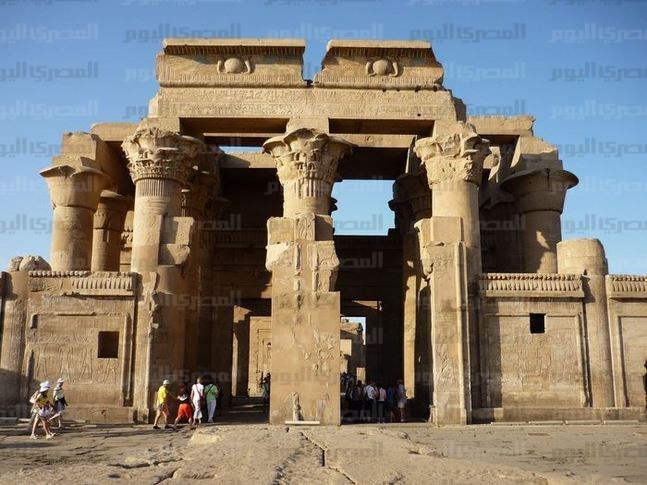
The Egyptian expedition working on the groundwater treatment project at the Kom Ombo Temple in Aswan discovered parts of a statue of King Ramses II. The discovered head showed King Ramses II wearing the white crown of pharaonic Upper Egypt.
The importance of this discovery lies in the fact that it serves as new evidence of the existence and use of the Kom Ombo Temple during the Ancient Egyptian modern state-era. There were little proofs supporting this prior to the discovery, but included the inscriptions belonging to King Thutmose III on the walls of temple, head of the Antiquities Sector with the Antiquities Ministry Ayman Ashmawy said in a statement on Tuesday.
The inscription on the discovered part of the statue depicts King Ramses II accompanied by the god Sobek and the god Horus, which represent the main gods of the Temple of Kom Ombo. The depiction of Sobek and Horus on the discovered artifact proves that the statue of King Ramses II belongs to the Kom Ombo Temple, and it was not moved from another place, Ashmawy mentioned.
The expedition continues to work on the site in the hope of discovering the rest of the statue, he added.
The discovered parts show the king in an Osiris-like pose with his hands crossed on his chest while holding the Ankh symbol, said Mohamed Abdel Badei, head of the Central Administration of Upper Egypt.
The discovered parts still retain some colors, he added.
When brought together, the discovered part is 75 centimeters high, Badei said, expecting the height of the statue to exceed 7-meters in total.
It is very similar to the royal statues in the Temple of the Ramesseum on the western bank of Luxor, Badei mentioned.
Abdel Moneim Saeed, Director General of Aswan and Nubia Antiquities, said some parts were still missing from the King’s face and left ear.
The Egyptian expedition working on the groundwater treatment project at the Kom Ombo Temple started its work in September 2017 and is scheduled to continue until September 2018. The expedition discovered statues and a limestone panel during its work in January, he added.
Edited translation from Al-Masry Al-Youm




